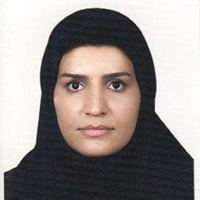Investigating the Relation between Women's Health and Economic Growth in D8 Countries: Konya Panel Causality Approach
Given its important role in the development process of human resources, human health is one of the major economic concerns, especially in developing countries. There are different perspectives about the relationship between woman's health and economic growth. The question has, in turn, raised among economists as to whether the economic growth is affected by women's health or the economic growth causes women's health. Despite the high importance of health variables, especially women's health, many areas related to the women's health have received little attention in the field. In the meantime, investing in women's health is considered as an investment for future generations, which, in turn, contributes to the development of societies. In effect, women covering half of the world's population play a major role in the economic development, and therefore have an effective and constructive role in the conduct of different economic sectors. Women are, indeed, one of the most important social groups affected by and at the same time affecting the quality of life in the society. They are also responsible for accelerating the process of sustainable development and change in society. For this reason, developing countries have realized that the need to create a healthy society mainly depends on having effective healthy women in the society. Healthy women are actually better able to contribute effectively to the labor market with direct results to providing the effective labor, and hence accelerating the economic growth and output levels. In effect, the better the health, the higher the return on educational capital. Considering the importance of health in the economic growth as one of the essential components of human capital, we attempted to investigate the effects of life expectancy, fertility rate, and mortality rate on the economic growth in the D8 countries. This study, indeed, investigated the causal relationship between women's health indicators (i.e., life expectancy, fertility rate and mortality rate) and the economic growth over the period 1990–2015 using the Konya (2006) Panel Causality approach for D8 countries. This method is based on Seemingly Unrelated Regression (SUR) and Wald tests with specific bootstrap critical values for each country. In addition, the Dmitrovskoe-Hurlin causality test was used to test causality in the D8 countries as a whole. The required data were extracted from the World Bank statistical database and the statistical analyzes were performed using the STATA 14, TSP and GAUSS 16 software. The findings indicated that in most of the D8 countries the hypothesis assuming no causal relationship between women's health indicators (i.e., life expectancy, fertility rate and mortality rate) and the economic growth cannot be rejected at the significance level of 5%. However, the hypothesis that there was no causal relationship between the economic growth and the women's health indicators was rejected. This means that there was no causal relationship between the variables of women’s health indicators and the economic growth; however there was a causal relationship between the economic growth and the women’s health indicators. Indeed, there was a one-way causal relationship between the economic growth and the women's health indicators. Finally, we concluded that there was a one-way causal relationship between the economic growth and the women's health indicators in these countries as a whole.
- حق عضویت دریافتی صرف حمایت از نشریات عضو و نگهداری، تکمیل و توسعه مگیران میشود.
- پرداخت حق اشتراک و دانلود مقالات اجازه بازنشر آن در سایر رسانههای چاپی و دیجیتال را به کاربر نمیدهد.




